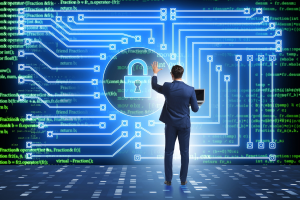During the pandemic, it seemed that few industries would avoid being taken down by the deadly health crisis. Though, two sectors reported surges in use — cloud and SaaS applications. Security teams, however, have had to consequently consider how the sudden growth of cloud and SaaS applications has both empowered and weakened organizations' cybersecurity.
A recent ESG survey found that maintaining consistent identity and access management controls across public and private clouds is the biggest challenge for IT and cybersecurity professionals.
During 2021, security teams will have to adapt to change to keep up with the acceleration of the move to the cloud and digital transformation. Initial measures that bridged the abrupt move from office to home working are now being revised, with priorities shifting from operational continuity to protecting the dynamic workforce. The surge in the use of SaaS applications globally is a key area for security teams to reconsider.
According to research from Enea, there has been an increase in risky behaviors and a further blurring of the lines between personal and corporate IT resources, amid the huge rise in the use of cloud applications and services.
The study, from the telecoms and cybersecurity software provider and Cybersecurity Insiders, involved a survey of chief information and security officers (CISOs) and other IT security practitioners from the latter’s 400,000-member information security community.
The survey found that the business use of personal devices was the working-from-home practice seen as carrying the greatest security risk, followed closely by the use of infrastructure as a service (IaaS). Regarding cyber threats, malware infections and data loss were the top cloud and SaaS concerns, cited by 77% and 72% of respondents, respectively. File sharing and hosting services (72%) and cloud email (57%) were also perceived as the top cloud/SaaS attack vectors.
Cyber AI is a new, increasingly prominent avenue cybersecurity specialists are using to ramp up their defenses. Darktrace’s automated threat investigation technology, Cyber AI is the application of artificial intelligence to the cyber defense challenge and has marked a fundamental shift in the ability to protect critical data systems and digital infrastructures. For strained security teams, it offers the possibility to keep pace with an ever-evolving threat landscape. Cyber AI is a self-learning technology that uses data and activity to respond to threats before they become a crisis.
Research from CyberArk and the Cloud Security Alliance also shows that stakeholders should align to identify which teams and individuals own privileges to reduce confusion and ensure responsibilities are clearly understood. Another strategy is to reduce permissions and make bare minimum permissions the new default. AWS is especially clear on this point, advising organizations to, “Start with a minimum set of permissions and grant additional permissions as necessary. Doing so is more secure than starting with permissions that are too lenient and then trying to tighten them later.”
Whatever strategies are implemented, a consistent, thorough, and adaptable approach is the key to protecting cloud and SaaS applications.
























